7.3L vs. 6.7L: Which Power Stroke Is Really Better?
This one should be interesting! After comparing the 7.3L to the 6.0L, the 6.0L to the 6.4L and even the 6.4L to the 6.7L Power Stroke, it’s time to pit the two most revered Power Strokes ever built against each other: the 7.3L vs. the 6.7L. With a reputation that precedes it, the 7.3L has long been known as an engine that will run forever. But let’s face it; while dead-on reliable, the 7.3L was noisy, laggy and underpowered—especially by today’s standards. Enter the 6.7L Power Stroke, with its CGI block, four-valve aluminum heads, common-rail injection, variable geometry turbocharger and air-to-water intercooler. It’s powerful, responsive and has also proven more reliable than its 6.4L and 6.0L predecessors. However, first-generation turbo problems and emissions-related issues are a source of common complaints.
To those not on the prowl for a new (or new-ish) truck, the 6.7L is a much more expensive path to owning a diesel-powered Ford. Even though the 6.7L Power Stroke can run circles around the 7.3L with or without a trailer in tow, the 7.3L still enjoys a loyal following. If you’re of limited means, don’t need to tow 15,000 pounds or more on a regular basis and don’t mind the clatter of an old-school diesel, the 7.3L is your workhorse. If you’ve got money in the bank and mountains to move, the 6.7L is most likely the better option for you. Follow along as we point out the key differences in these radically different engines. From the type of metallurgy they’re built from, to the polar opposite turbo and injection technologies they employ, to why each version worked/works so well in the diesel truck segment.
If this doesn’t satisfy your sweet tooth for Ford diesels, check out the individual history lessons we’ve put together on the 7.3L and 6.7L.
Let’s Compare the Hard Facts
| 7.3L Specs | 6.7L Specs | |
| Production: | 1994.5-2003 | 2011-present |
| Displacement: | 444 ci | 406 ci |
| Bore: | 4.11 inches | 3.90 inches |
| Stroke: | 4.18 inches | 4.25 inches |
| Block: | Cast-iron | Deep-skirt, compacted graphite iron (CGI) |
| Rods: | Forged-steel (’94.5-’01), powdered-metal (’01-‘03) | Powdered-metal |
| Pistons: | Cast-aluminum | Cast-aluminum |
| Heads: | Cast-iron with six head bolts per cylinder (with sharing) | Cast-aluminum, reverse-flow with six 12mm head bolts per cylinder (with sharing) |
| Compression Ratio: | 17.5:1 | 16.2:1 |
| Valvetrain: | Overhead valve, two valves per cylinder, hydraulic lifters | Overhead valve, four valves, four rocker arms and four pushrods per cylinder |
| Injection System: | Hydraulic electric unit injector (HEUI) | Bosch high-pressure common-rail |
| Emissions: | Catalytic converter | Exhaust gas recirculation (EGR), diesel oxidation catalyst (DOC), diesel particulate filter (DPF), selective catalytic reduction (SCR) |
| Factory Horsepower: | 210hp at 3,000 rpm (‘94.5) to 275hp at 2,800 rpm (’01-‘03) | 390hp at 2,800 rpm (initial launch) to 450hp at 2,800 rpm (‘18+) |
| Factory Torque: | 425 lb-ft at 2,000 rpm (‘94.5) to 525 lb-ft at 1,600 rpm (’01-‘03) | 735 lb-ft at 1,600 rpm (initial launch) to 935 lb-ft at 1,800 rpm (‘18+) |
Power Stroke Patriarch vs. State-of-the-Art Powerhouse
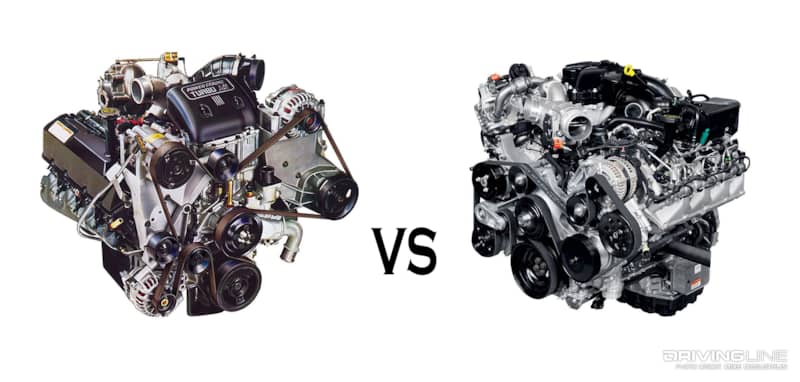
The old man and the new kid on the block. Designed, tested and manufactured at different points in history (and under different testing parameters), the 7.3L and 6.7L are two completely different Power Strokes. The 7.3L was based on a cast-iron block and built at Navistar’s Indianapolis, Indiana engine plant, whereas the 6.7L’s crankcase is made from compacted graphite iron (a much stronger yet lighter casting material) and is assembled at Ford’s Chihuahua, Mexico facility (some 250 miles south of El Paso, Texas). The 6.7L makes use of cross-bolted main bearing caps that feature six fasteners apiece, while the 7.3L utilized four-bolt mains with no cross bolts.
Cast-Iron Two-Valve Heads vs. Reverse-Flow Four-Valve Cast-Aluminum Heads
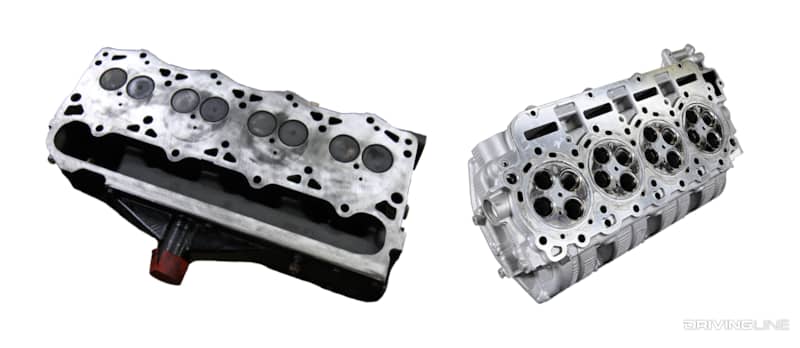
Cast-iron, two-valve cylinder heads utilizing six head bolts per cylinder kept the top-end of the 7.3L simple and reliable (left). However, the reverse-flow cylinder heads manufactured for the 6.7L (right) were a first for the diesel pickup segment. Its cast-aluminum heads bring in airflow through the valve covers and expel exhaust gases into manifolds located in the lifter valley. This keeps turbo efficiency high (namely responsiveness) and engine compartment heat low. They’re secured to the 6.7L’s CGI block via six 12mm diameter head bolts per cylinder. Additionally, the 6.7L’s heads not only feature four valves per cylinder, but four rockers and four pushrods (no valve bridges). As you can imagine, they handily outflow the 7.3L’s heads on the intake side.
Emissions
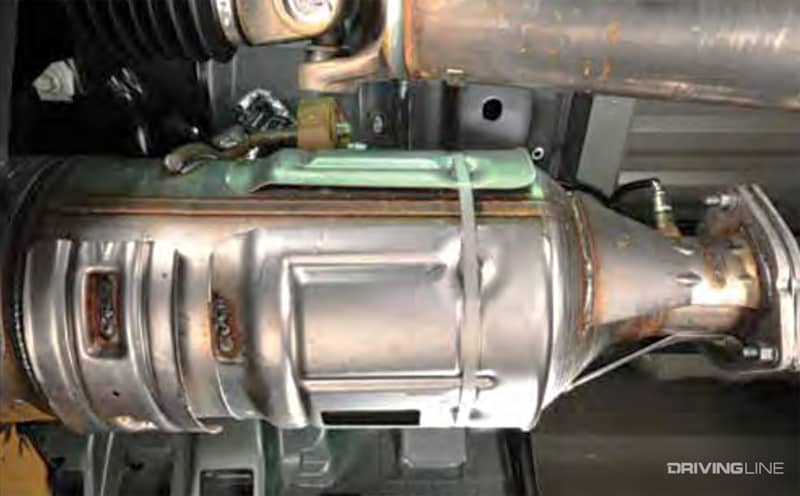
Emissions components is one area where the 7.3L shines, definitively, over the 6.7L—primarily due to its lack of them. Born in an age when the stringent EPA standards present today weren’t even on the table (and NOx was measured in grams per mile instead of milligrams), all that was required of the 7.3L to be emissions compliant was the use of a catalytic converter. However, 2010 is a long way from 1994 in terms of emission standards—and the 6.7L Power Stroke had the book thrown at it in order to meet the NOx and particulate matter requirements implemented between 2007-2010. This includes the use of exhaust gas recirculation (EGR), a diesel oxidation catalyst (DOC), diesel particulate filter (DPF, shown above) and selective catalytic reduction (SCR), which calls for the use of diesel exhaust fluid (DEF) to curb NOx emissions the EGR system can’t. All of the components above add complexity and function in extremely harsh environments. Needless to say, most of the 6.7L Power Stroke’s problems (usually with higher miles) are emissions-related.
HPOP (7.3L)
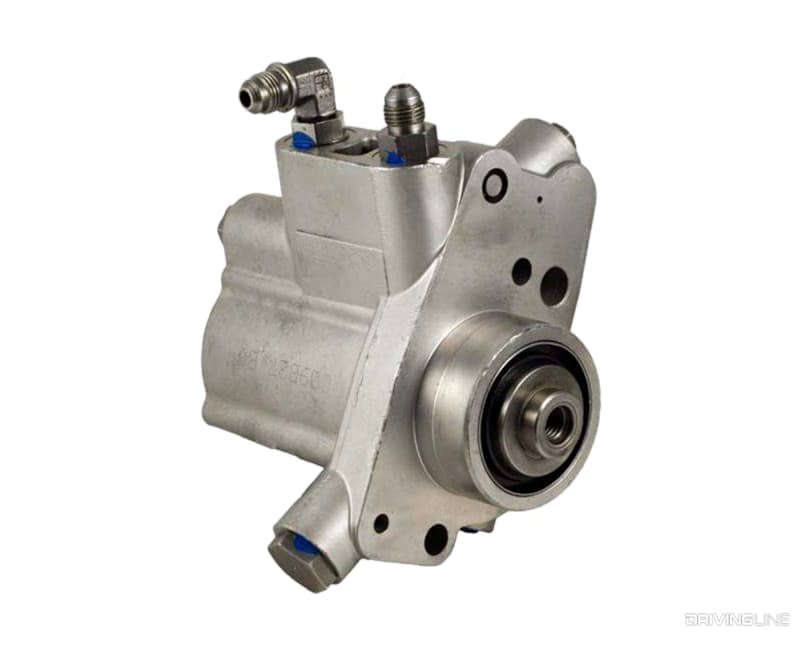
The 7.3L’s one area of complexity exists in its hydraulic electric unit injector (HEUI) system, an injection system that depends on highly pressurized engine oil to actuate the fuel side of the injectors. Instead of having a fuel injection pump, the 7.3L utilizes a high-pressure oil pump (HPOP). The HPOP is responsible for producing the amount of oil volume the HEUI system needs, while the injection pressure regulator (IPR) on the back side of the HPOP pressurizes the oil in the rails between 500 psi and 3,000 psi. The HPOP isn’t timed to either the crankshaft or the camshaft. Unlike the 6.7L’s fuel injection pump, the HPOP on the 7.3L is extremely reliable, rarely self-destructing in the event of a failure. However, the HEUI system itself is exceptionally hard on the engine oil, with 3,000-mile change intervals being recommended amongst most end-users.
CP4.2 (6.7L)
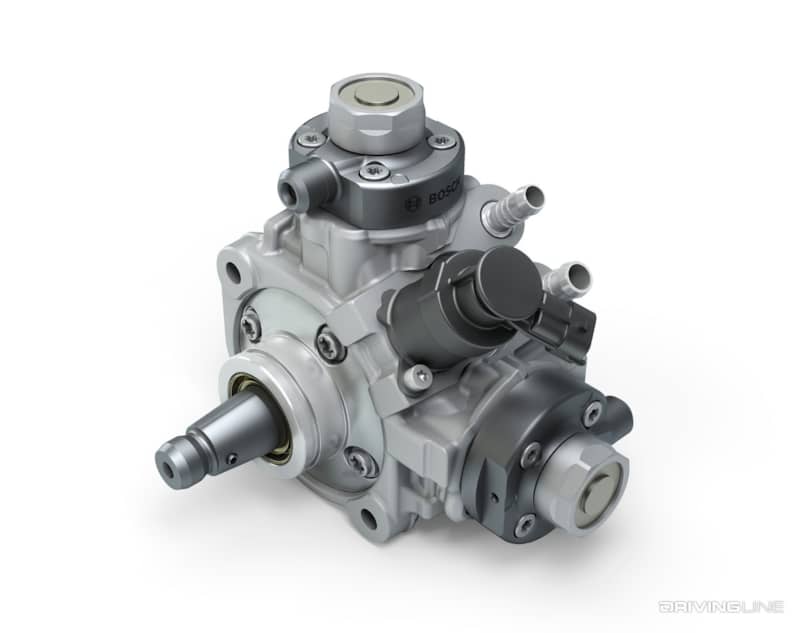
No HEUI here, just diesel fuel. Modern day, common-rail technology is employed on the 6.7L Power Stroke and at the heart of the system is a CP4.2 high-pressure fuel pump from Bosch. The twin piston pump can produce as much as 30,000 psi worth of injection pressure in the 6.7L application and is extremely efficient. Unlike the 7.3L however, the CP4.2 must be timed with the crankshaft and camshaft and is more prone to failure (usually in the event of aeration or contaminated fuel). When the CP4.2 expires, it’s known to implode and send metal fragments into the injectors, as well as back to the fuel tank, and can cost as much as $10,000 in repairs.
HEUI Injector (7.3L)
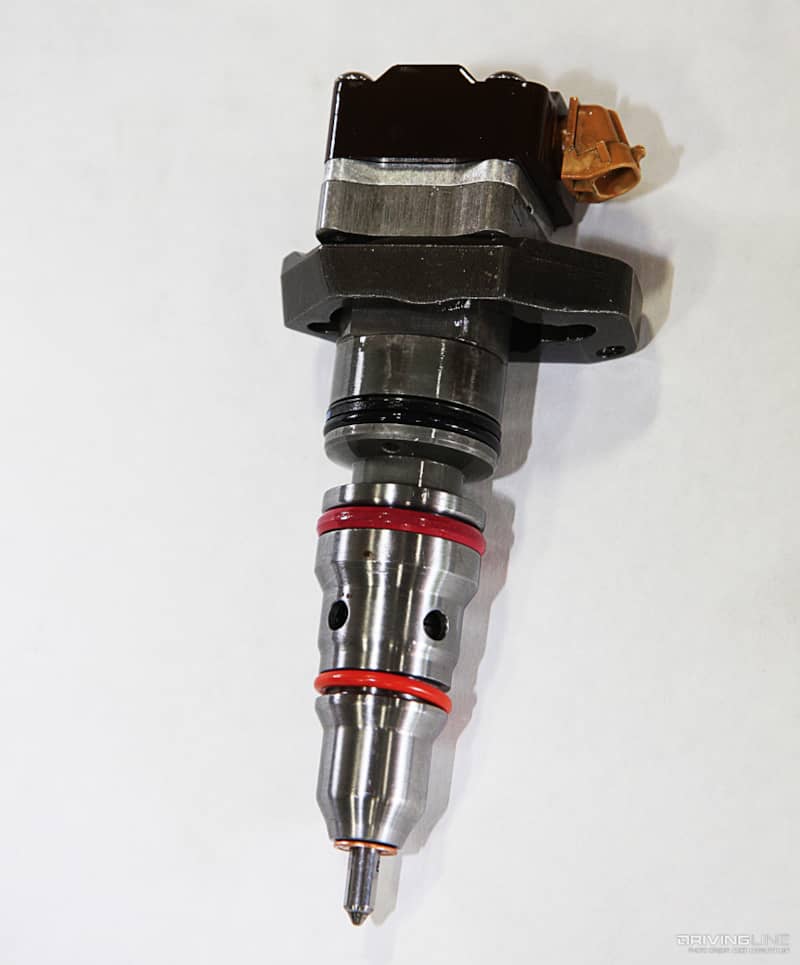
Massive in size, the HEUI injector used in the 7.3L takes in high-pressure oil (from the oil rails integrated into the 7.3L’s cylinder heads) through its poppet valve near the top of the injector body. Low-pressure diesel fuel is supplied to the injector’s fuel inlet (located lower in the body) by the lift pump, which maintains 45 to 65 psi depending on the application (mechanical vs. electric lift pump). Then, through a process of pressure multiplication (where the intensifier piston on the oil side of the injector measures 7.1 times larger than the surface area of the plunger) high-pressure oil pressure is effectively taken from 3,000 psi (oil side) to 21,000-plus psi at the injector nozzle (fuel side, in-cylinder). Available in either single-shot (’94.5-‘97) or split-shot designs (’99-‘03), the 7.3L injectors are the primary reason this engine is so loud.
Common-Rail Piezoelectric Injector (6.7L)
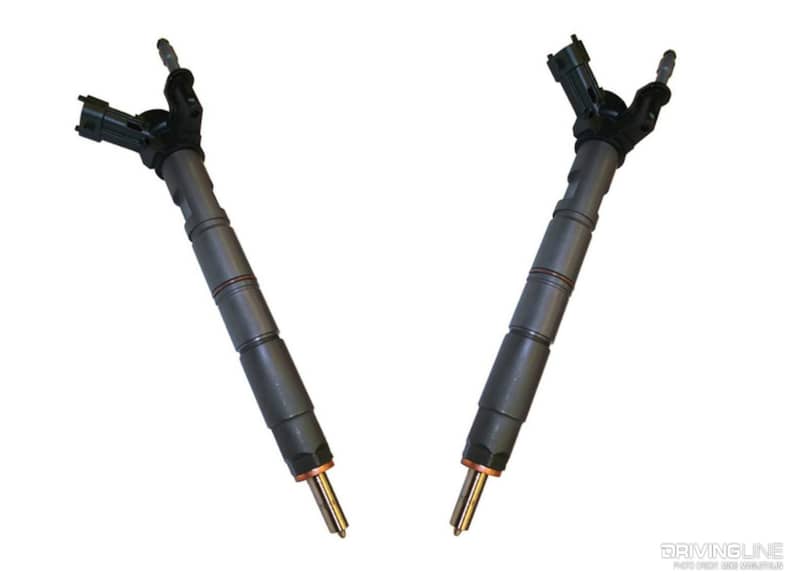
Firing on fuel alone, the eight-hole Bosch piezoelectric common-rail injectors in the 6.7L Power Stroke can carry out as many as five injection events per combustion event. By comparison with the 7.3L, the dual pilot event capability of the piezo injectors makes it night-and-day different in the noise department. They’re also capable of delivering considerably more fuel volume in-cylinder, and at a much quicker injection rate. The preciseness of the pilot, main and post injection events provide for considerably quieter operation, vastly more power output and cleaner particulate matter emissions.
7.3L Turbo: Fixed Geometry Garrett
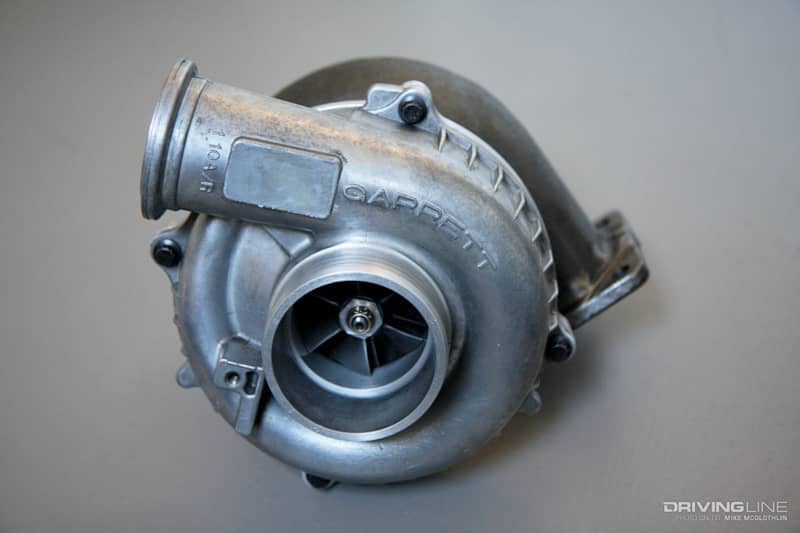
A fixed-geometry, journal bearing turbocharger with a 60mm (inducer) compressor wheel and 70mm (exducer) turbine wheel was found on all 7.3L Power Strokes. However, a non-wastegated Garrett TP38 with a 1.15 A/R exhaust housing and a divided T4 turbine inlet flange was used on ’94.5-’97 engines found in F-series trucks, while a wastegated version of the TP38, fitted with a divided V-band style turbine inlet flange and a 0.84 A/R exhaust housing came mounted on early ’99 mills. Beginning in ’99.5, the updated GTP38 was used, which came with a map width enhancement groove, a larger wastegate and a 1.0 A/R exhaust housing. Surge issues are common on ’99-’03 turbochargers, which is attributed to a different style compressor wheel than what was found in the ’94.5-’97 turbo (and a simple wheel swap from the old turbo into the new one solves the surging issue), but each turbo is known to be reliable up to roughly 35 psi of boost.
2011-2014 6.7L Turbo: Variable Geometry Garrett GT32 SST
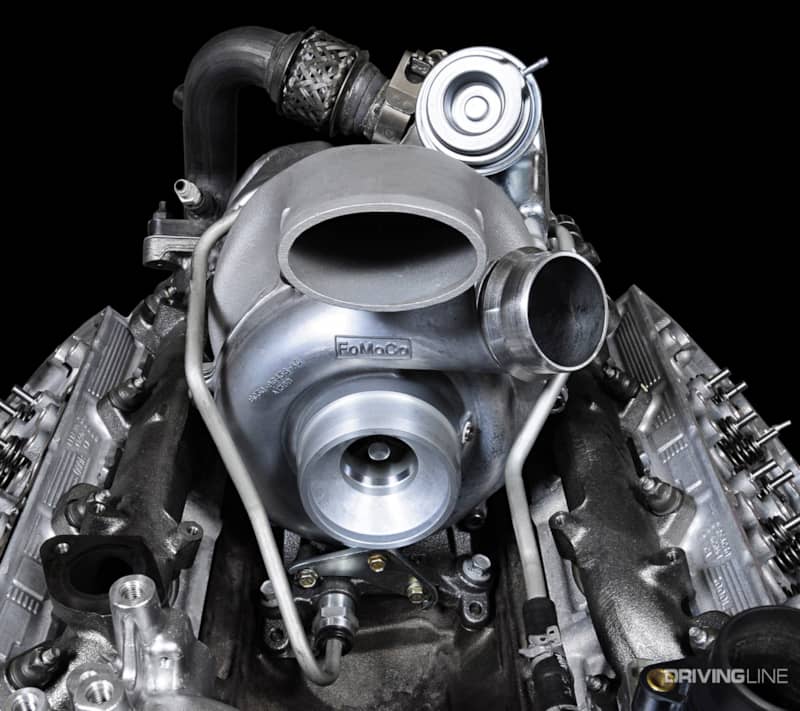
While three subtly different turbochargers were found aboard the 7.3L, two significantly different turbos have graced the 6.7L Power Stroke. First generation engines (’11-‘14) were equipped with the problematic Garrett GT32 SST, a twin compressor wheel, dual ball bearing and wastegated variable geometry turbo. The compressor wheel inducers measured just 46mm and the turbine wheel’s exducer checked in comparatively smaller than other wheels used in similar applications (i.e. Duramax and Cummins), which hampered flow at high rpm. Its restrictive nature often leads to shaft speeds exceeding 150,000 rpm, which culminates in overspeeding. Thanks to the factory programming of the 6R140 transmission, lugging the engine in sixth gear with the converter locked can yield considerable compressor surge.
Bigger and Better VGT (’15-present 6.7L)
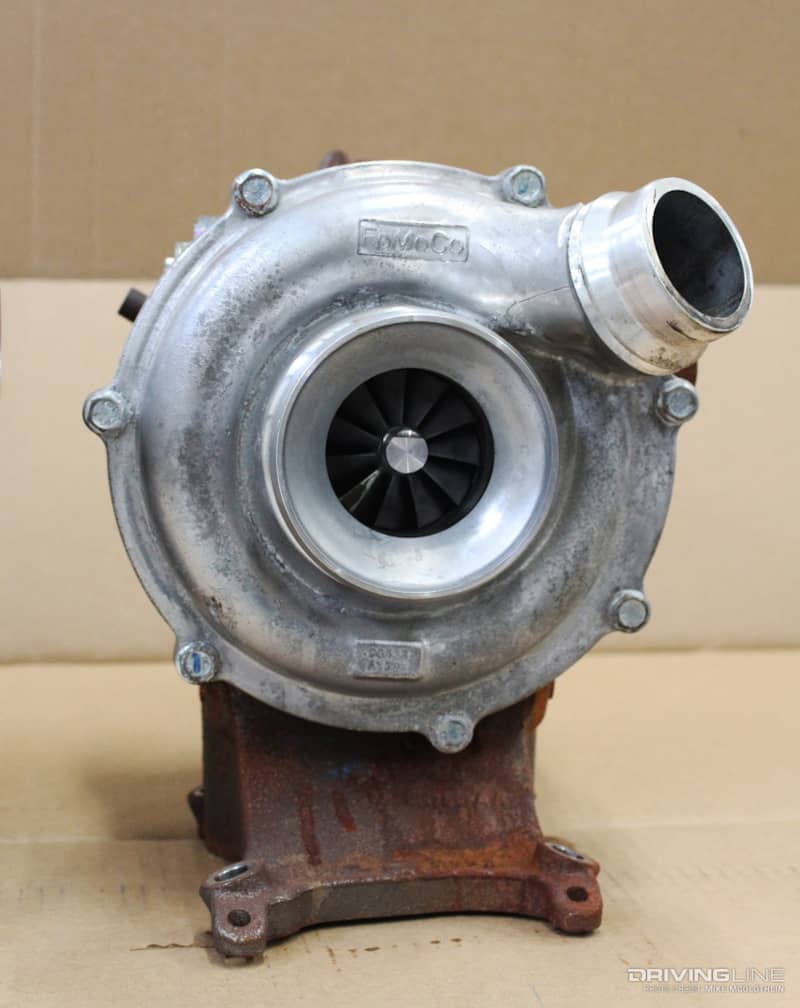
Sticking with Garrett, yet moving away from the restrictive, problematic GT32 SST, Ford changed over to a GT37-based charger for ’15 model year 6.7L Power Strokes and hasn’t looked back. While some of the off-idle thrust from the abundance of torque offered by the restrictive GT32 was gone, the GT37 variant is still a responsive VGT, but its single 61mm (inducer) compressor wheel and larger turbine allows for considerably more airflow at high rpm. Not surprisingly, many ’11-’14 Super Duty owners have found themselves converting over to the ’15-newer style turbo system once their GT32 SST bites the dust. When comparing the performance of the fixed geometry turbo aboard the 7.3L Power Stroke with the VGT units used on the 6.7L, there is hardly anything good to say. The VGTs respond better at every engine speed, provide for more low-rpm torque to be produced and also benefit from having both oil and coolant circulating throughout the center section.
Air-to-Air Intercooler (’99-’03 7.3L) vs. Air-to-Water Intercooler (6.7L)
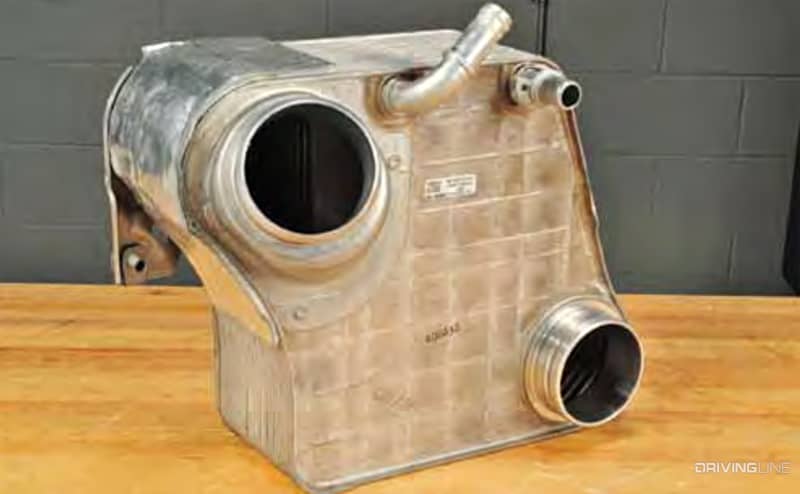
Building on the efficiency of the VGTs used on the 6.7L, unmatched charge air cooling can be found in the 6.7L’s air-to-water intercooler. A first for the diesel truck segment, Ford’s air-to-water unit uses coolant from the engine’s secondary cooling system to keep intake charge dense and EGT within check—and it works very well. By comparison, the early 7.3L Power Stroke didn’t come equipped with an intercooler (’94.5-‘97), while ’99-’03 engines came with a conventional air-to-air unit. Before even considering how much more efficient it is, the under hood space saving alone makes the 6.7L’s air-to-water intercooler the clear winner in our book.
High-Mile Reliability (7.3L)
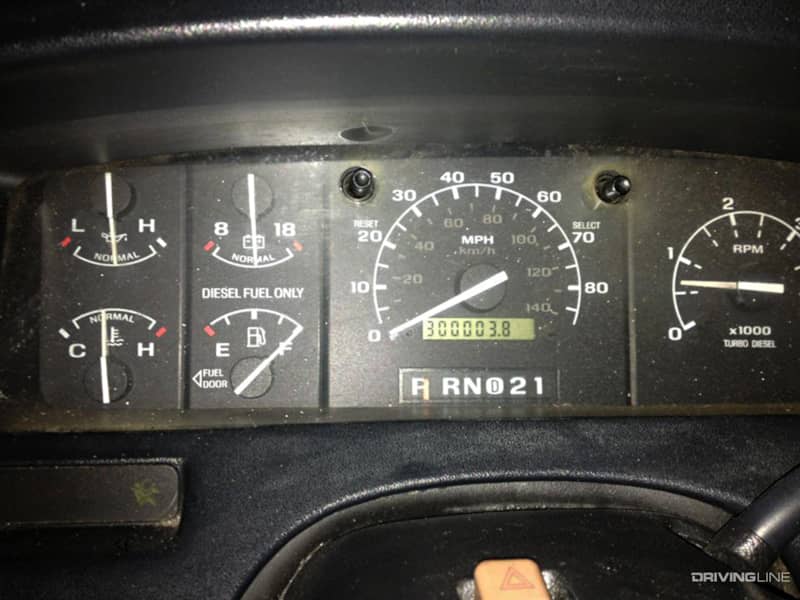
With regular maintenance, the 7.3L can easily outlive its B50 life of 350,000 miles, and we’ve seen countless trucks with more than 400,000 on the odometer. Smaller, knick-knack items such as camshaft position sensor failure, a malfunctioning exhaust back pressure valve (EBP), burned up UVCH harnesses or leaking up-pipes are common, but catastrophic engine failure is extremely rare. Unlike its 6.0L successor, which also used HEUI injection (albeit a different version from a separate supplier), the 7.3L’s HPOP and injectors hold up exceptionally well as long as you perform regular maintenance. Injector overhaul is predicted at 200,000 miles, but we’ve seen twice that amount on dozens of trucks.
High-Mile Reliability (6.7L)
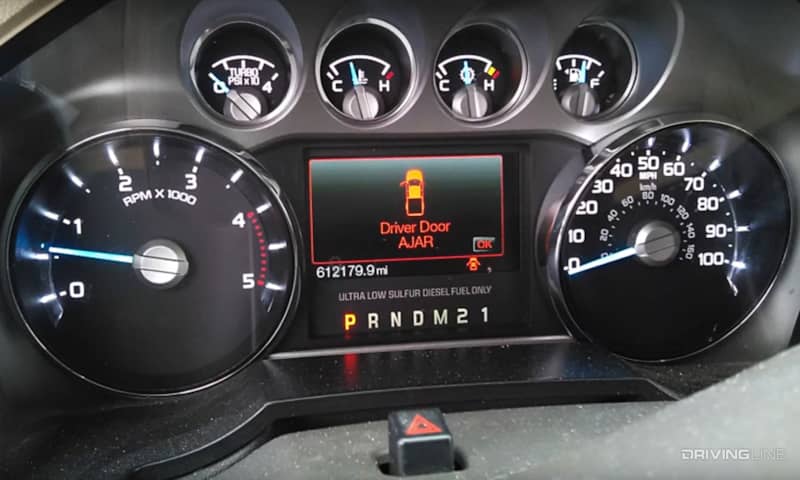
After years of production, the 6.7L Power Stroke has proven it can storm past the 200,000-mile mark with few repairs. Provided you adhere to Ford’s recommended service intervals, there is no reason this engine won’t see 300,000 or even 400,000 miles. Of special concern is making sure the CP4.2 high-pressure fuel pump always sees quality fuel that’s as free of air and contaminants as possible, and that both fuel filters are changed at or before the suggested interval. The biggest hindrance in a 6.7L owners’ pursuit of high miles boils down to emissions system-related failures. EGR valves, EGR coolers, the DPF and/or SCR systems and the various sensors throughout the emissions-control systems can all lead to forced repairs, from minor to cataclysmic. Like the 7.3L, there are countless tales of this engine holding up in harsh environments, such as the Texas oil fields, cross-country hot-shotters and along North America’s pipelines.







